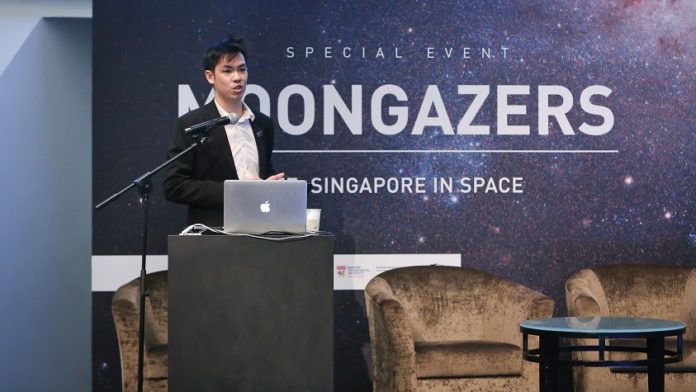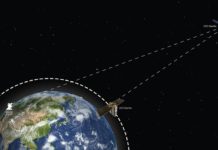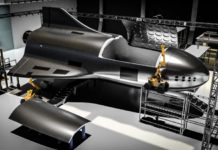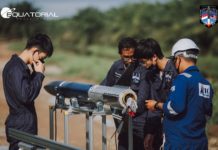Aliena and NuSpace are two new Singapore space startups, both having spun off from research institutions in Nanyang Technological University (NTU) and the National University of Singapore (NUS) respectively. Aliena was formed in August 2018, and NuSpace in November the same year, and both have so far gained traction within the local and international space communities.
Aliena’s focus is on cubesat propulsion systems, and its first propulsion solution – a product of research done in NTU – is a type of miniature plasma thruster known as a Hall-thruster. Meanwhile, NuSpace will leverage on the team’s experience working on NUS remote sensing cubesat project Galassia, to develop a space-based IoT constellation covering the equatorial belt and beyond.
The two startups have come together to work on a common project: a constellation-management system which they have termed an “integrated avionic suite”. This will offer a complete end-to-end solution for the deployment and management of Low Earth Orbit (LEO) constellations, tailored to suit the users’ needs. For this, the two companies will jointly assemble and integrate cubesats that will be powered by Aliena’s thrusters and NuSpace’s Active Attitude Determination & Control System. The project will begin with a demonstration 3U cubesat, NuX-1, planned for launch in the first quarter 2021.
We spoke with Mark Lim, CEO and Co-Founder of Aliena, and Ng Zhen Ning, Co-Founder CEO of NuSpace, on their avionic suite and the future of Singapore’s space industry.
The Integrated Avionic Suite
At the heart of the integrated avionic suite are two components: plasma-propulsion Hall-thrusters, and a platform that can automatically perform corrective orbital maneuvers for an entire nanosatellite constellation.
Said Zhen Ning, “The avionic suite consists of an Active Attitude Determination & Control System from NuSpace and a propulsion device from Aliena. These 2 separate modules will be integrated, along with proprietary software, to produce an integrated avionic suite. The avionic suite will be able to perform autonomous orbit maneuvers, which is an enabler for autonomous constellation management.”
He added, “The constellation management system will consist of a ground-based software that monitors the current orbits of each satellite in the constellation, as well as the satellite-based integrated avionic suite. Whenever the system detects that a satellite is deviating from its intended orbit, the satellite will perform a maneuver for correction. The user is also able to command the satellite to change its orbit as a separate command.”
Mark explained that the system will be customized to client needs using a “modular integrated system”.
Said Mark, “I do understand that having the word modular and integrated sounds like an oxymoron. What this implies is that our systems – while integrated (and customized to fit within 1U envelopes) to meet the demands of the commercial market, are also modular. The key components and peripherals to be deployed on board our systems can be easily interchanged to meet the operational demands of our customers. For example, if our customer wants to perform extended operations in space (thereby requiring more fuel), we have the ability to swap in a larger tank. Should they favour a higher thrust over specific impulse to achieve maneuvers in a desired amount of time, we can swap in a different thrust head and power processing unit to match the operational parameters they require. Everything is modular – from the tank, to the thrust heads, and even the controller and processing units.”
Why a constellation management system?
Both Mark and Zhen Ning believe that an autonomous constellation management system will address the growing number of nanosatellite constellations, and will also reduce barriers to entry in the space industry.
They said, “There are plans for 24500+ satellites to be launched, forming around 80 constellations, at the moment. Constellation management can be very manpower intensive, hence, having an autonomous system that is able to manage this would greatly bring down the manpower requirements and operation costs.”
“Additionally, a developed solution like this will also reduce the lead-time for traditional non-spacefaring industries to rapidly deploy space-borne assets to complement their businesses and operations terrestrially. This gives them the ability to focus on the development of payloads relevant to their businesses, and for the integrated solution to rapidly “plug-in” to their platforms, allowing them to run their operations seamlessly and fuss-free. This presents an avenue for disruptive technologies to flourish in space with new industries gaining the opportunity to fly and utilize space for emerging applications.”
Building a Singapore space ecosystem
According to the two founders, a driving impetus for their close collaboration is to help build and grow the local space ecosystem in Singapore.
Said Mark, “[Although we are] from two different universities, we have decided to come together to demonstrate capability and readiness for commercialization through harnessing the strengths, talent and infrastructure present in both companies.”
“Becoming commercial and private entities has allowed us to rapidly put aside bureaucracy from within the universities, and to develop close partnerships to do something extremely disruptive for Singapore’s commercial space ecosystem. We believe that this will be the 1st of many partnerships forged between companies in the Singapore and regional space-tech scene,” he added.
The road towards developing a thriving Singapore space industry
Mark believes that Singapore has the potential to become a leader in the space industry by focusing on the small and nanosatellite markets, and by transforming academic research into viable commercial products.
He explained, “As the barriers to entry for deployment of platforms, hardware and services in space go down, Singapore’s strategic initiatives to incubate and translate deep-tech products from conception to commercially-viable products will allow for a space ecosystem to thrive and compete on the global stage. Singapore’s involvement in development of small and nanosatellite platforms in the past few years is a good example of this. Small and nanosatellite platforms allow research and commercial entities to rapidly conceive modular payloads that can be deployed quickly in technology demonstrations in-orbit to serve as technological enablers or disruptors to existing terrestrial-based services. This is an extremely unique model as it allows for deep expertise present in our local Institutes of Higher Learning (IHLs) to be able to contribute towards academic translation of ideas to novel products, while also allowing for them to go through a gestation period within the academic institutions – should they require additional time for trials.”
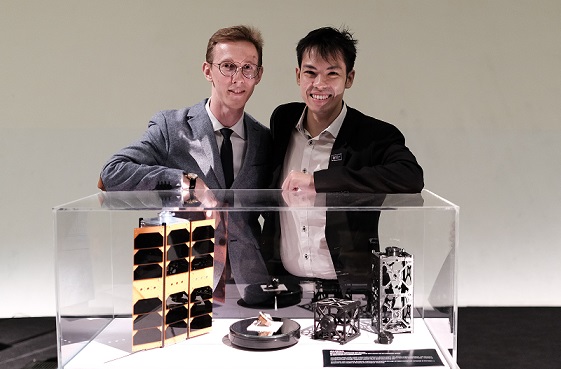
“In the short-term, it allows for these modular technologies to be rapidly spun-off that can serve the markets and allow for new services to be deployed and implemented in space. In the long term, the IHLs serve as a good breeding ground for talent to flow into the pipeline that will eventually continue to grow and augment the space ecosystem and industry in Singapore – this can also be seen as long term capability and capacity development.”
“That said, it is important for companies and academic institutions to aggregate and support each other in the ecosystem we are operating out of in Singapore. That might be the only way for Singapore to eventually rise up and hold her own amongst leaders from conventional space-faring countries in the space industry. I am optimistic that Singapore’s space industry will continue to evolve rapidly and exponentially given the conditions for growth that are presented to us at this moment. I look forward to working closely with other partners from within Singapore’s commercial space ecosystem to create an avenue for our businesses to thrive and prosper in the near future – and to enable an environment for operations to be conducted in a sustainable manner for our generation and the generations to follow.”
Singapore as a space hub
Zhen Ning believes Singapore will become a space hub for the region.
He said, “Personally, I envision that Singapore transforming into a Space Hub. Singapore has been known to be the hub of many things; financial hub, trade hub, maritime hub, air hub just to name a few. Exactly what this would consist of is still too early to tell, but I believe that it would at least be a catalyst for collaboration to happen among regional entities in Singapore, be it for commercial or research purposes. In either case, it would be a win-win situation for both the regional entities as well as Singapore. Regional entities would see more collaboration opportunities, leveraging off each other’s advantages, while Singapore would stand to benefit by learning from the rest (essentially a form of knowledge transfer from other space entities). In terms of manpower, we are already seeing a shift on the emphasis towards space education (as can be seen by the various nanosatellites that were launched by the local research institutions) which will support entities coming to Singapore to establish local offices with manpower that is relevant. With the right elements, a Singapore Space Hub might even become the “Silicon Valley” for regional space startups to locate in as it is home to talents, facilities, resources and funding opportunities. “
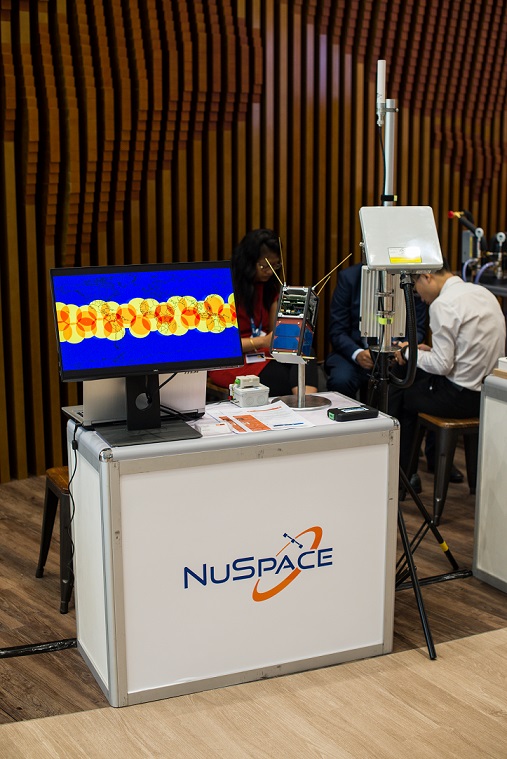
“With much effort and the right push by the government, Singapore could eventually become the leader in space technologies and industry. I am very excited to see the growth of the space sector in Singapore and too, look forward to working with various entities from the local space ecosystem to grow and increase Singapore’s international space presence,” he concluded.

